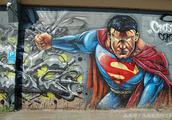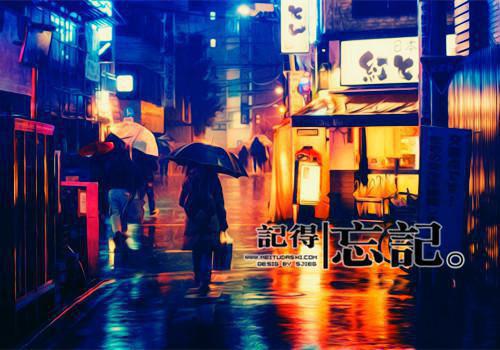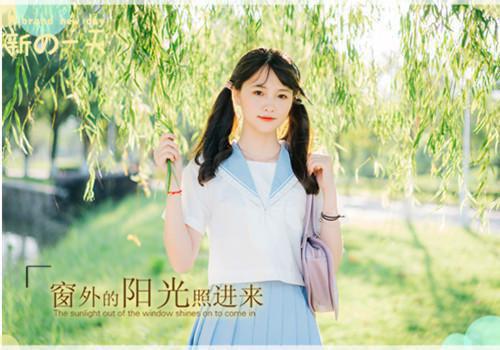English cultural Festival
In the beginning of May,our school held a activity related to English.It is called English cultural festival.It lasted for a week.Almost all classes took part in .
This cultural festival had various programs which attract many students.There was a flea market where many people choosed to sing.Here lots of students crowded here.The helding of English karaoke contest attracted those who love to sing English songs to show themselves.It allowed to sing with only one person also a composition.One composition of my class won the first prize.Besides English karaoke contest,we also have a English playlet contest.It is very pity that our class only won the third prize because we had exceed the time.But we thought our performance was very good.We expressed our feeling our words appropriately.The most important ,with the hard training,our whole class got through the common difficulties and happiness.The hard working was worthwhile.Most important,our whole class took part in .It embodied our unity.
The most interesting program in this cultural festival was English word contest.If you didn't have enough English words capacity,you would lose this contest .It also can help us to memorize more words.Our class has s first prize owner also a third one.
The last program is English garden tour.Our class was responsible for proposition.If someone won ,he would have award.Our topic is describing a scenery in English.Class Three won the first prize.
This English cultural festival was very successful.Students were all satisfied for it.From this activity,more and more students has interest in learning Englis.We hope this kind of activity can be held more.
介绍中国文化的英语作文
Traditional Chinese culture is beginning to capture the attention of the world. This is true even as popular culture that has traditionally been considered Western begins to spread throughout China. Kung Fu, especially, has had a great impact on the millions of people who first learned about China through it. From that, they may come to China and learn about other aspects of this culture, such as traditional operas like the Beijing and Sichuan ones. Asian nations have long known about the greatness of ancient Chinese culture. Their own cultures are a mix of native ones and those Chinese characteristics. Korea and Japan long ago adopted ideas such as Confucianism is something that continues today even as it is challenged by Pop Culture. This strength comes from the ideas given in the Four Books of Confucianism (The Great Learning, The Doctrine of the Mean, The Analects of Confucius, and The Book of Mencius). These books built upon the ideas of an even more ancient period codified in the Five Classics. From them, the West learns such things as Fengshui and other concepts that are uniquely Chinese. China has taken steps to further this spread of its culture by establishing Chinese Cultural Centers in such places as the United States and Europe.中国传统文化正在吸引全世界的注意,尽管在传统意义上被看成是西方文化的流行文化开始在中国广泛传播。
尤其是中国功夫,对于那些通过功夫初次了解中国的成千上万的人来讲,有着非常大的影响。
由于功夫,他们可能来到中国,学习了解中国文化的其他方面,比如京剧和川剧这样的传统戏剧。
亚洲国家很早以前就知道古代中国文化的博大。
他们自己的文化混合了本民族的文化和中国文化的特色。
韩国和日本很早就把儒教等观念引进了他们的社会当中。
甚至在被流行文化冲击的今天,儒教的影响也一直在延续。
这种力量来自“四书”(《大学》、《中庸》、《论语》和《孟子》)中的思想。
这些书是依照“五经”之中所体现的更为早期的思想而著成的。
西方人从中了解到了诸如风水等中国所特有的文化概念。
中国已经通过向其他国家派遣文化使者并在美国、欧洲等地建立中国文化中心来进一步推广中国文化。

关于中国传统文化的英语作文
这些东西都可以再网上查到!关于长城的传说 In the north of China, there lies a 6,700-kilometer-long (4,161-mile-long) ancient wall. Now well-known as the Great Wall of China, it starts at the Jiayuguan Pass of Gansu Province in the west and ends at the Shanhaiguan Pass of Hebei Province in the east. As one of the Eight Wonders in the world, the Great Wall of China has become the symbol of the Chinese nation and its culture. Lots of beautiful legends and stories about the Great Wall took place following along the construction, and since that time these stories have spread around the country. Those that happened during construction are abundant, such as Meng Jiangnu's story and the legend of the Jiayuguan Pass. Meng Jiangnu's story is the most famous and widely spread of all the legends about the Great Wall. The story happened during the Qin Dynasty (221BC-206BC). It tells of how Meng Jiangnu's bitter weeping made a section of the Great Wall collapse. Meng Jiangnu's husband Fan Qiliang was caught by federal officials and sent to build the Great Wall. Meng Jiangnu heard nothing from him after his departure, so she set out to look for him. Unfortunately, by the time she reached the great wall, she discovered that her husband had already died. Hearing the bad news, she cried her heart out. Her howl caused the collapse of a part of the Great Wall. This story indicates that the Great Wall is the production of tens of thousands of Chinese commoners. Another legend about the Jiayuguan Pass tells of a workman named Yi Kaizhan in the Ming Dynasty (1368BC-1644BC) who was proficient in arithmetic. He calculated that it would need 99,999 bricks to build the Jiayuguan Pass. The supervisor did not believe him and said if they miscalculated by even one brick, then all the workmen would be punished to do hard work for three years. After the completion of the project, one brick was left behind the Xiwong city gate. The supervisor was happy at the sight of the brick and ready to punish them. However Yi Kaizhan said with deliberation that the brick was put there by a supernatural being to fix the wall. A tiny move would cause the collapse of the wall. Therefore the brick was kept there and never moved. It can still be found there today on the tower of the Jiayuguan Pass. In addition to the above-mentioned stories about the construction of the Great Wall, there are also plenty of stories about current scenic spots. A famous one is the legend of the Beacon Tower. This story happened during the Western Zhou Dynasty (11th century BC-711 BC). King You had a queen named Bao Si, who was very pretty. King You liked her very much, however Bao Si never smiled. An official gave a suggestion that setting the beacon tower on fire would frighten the King's subjects, and might make the queen smile. King You liked the idea. The subjects were fooled and Bao Si smiled at the sight of the chaos. Later enemies invaded Western Zhou, King You set the beacon tower on fire to ask for help. No subjects came to help because they had been fooled once before. Thus, King Zhou was killed by the enemy and Western Zhou came to an end. Beautiful stories and legends about the Great Wall help to keep alive Chinese history and culture. In each dynasty after the building of the Great Wall, many more stories were created and spread. 历史 No one can tell precisely when the building of the Great Wall was started but it is popularly believed that it originated as a military fortification against intrusion by tribes on the borders during the earlier Zhou Dynasty. Late in the Spring and Autumn Period (770 BC - 476 BC), the ducal states extended the defence work and built "great" structures to prevent the attacks from other states. It was not until the Qin Dynasty that the separate walls, constructed by the states of Qin, Yan and Zhao kingdoms, were connected to form a defensive system on the northern border of the country by Emperor Qin Shi Huang (also called Qin Shi Huangdi by westerners or the First Emperor). After the emperor unified the country in 214 BC, he ordered the construction of the wall. It took about ten years to finish and the wall stretched from Linzhao (in the eastern part of today's Gansu Province) in the west to Liaodong (in today's Jilin Province) in the east. The wall not only served as a defence in the north but also symbolized the power of the emperor. From the Qin Dynasty onwards, Xiongnu, an ancient tribe that lived in North China, frequently harassed the northern border of the country. During the Han Dynasty, Emperor Wu (Han Wu Di), sent three expeditions to fight against the ...
中国传统文化的英语作文
Culture of China The Culture of China is home to one of the world's oldest and most complex civilizations. China boasts a history rich in over 5,000 years of artistic, philosophical, political, and scientific advancement. Though regional differences provide a sense of diversity, commonalities in language and religion connect a culture distinguished by such significant contributions such as Confucianism and Taoism. Confucianism was the official philosophy throughout most of Imperial China's history and strongly influenced other countries in East Asia. Mastery of Confucian texts provided the primary criterion for entry into the imperial bureaucracy.With the rise of Western economic and military power beginning in the mid-19th century, Western systems of social and political organization gained adherents in China. Some of these would-be reformers rejected China's cultural legacy, while others sought to combine the strengths of Chinese and Western cultures.China is a unified nation consisting of many different ethnic groups. Fifty-six different ethnic groups make up the great Chinese national family. Because the Han people accounts for more than ninety percent of China's population, the remaining fifty-five groups are generally referred to as "ethnic minorities." Next to the majority Han, the Mongolian, Hui, Tibetan, and Uygur peoples comprise the largest ethnic groups. Although China's ethnic minorities do not account for a large portion of the population, they are distributed over a vast area, residing in every corner of China.Particularly since the implementation of China's opening and reform policy, the central government has increased investment in minority areas and accelerated their opening to the outside world. This has resulted in an upsurge of economic development in these areas. Each of China's ethnic minority groups possesses a distinctive culture. The Chinese government respects minority customs, and works to preserve, study, and collate the cultural artifacts of China's ethnic minority groups. The government vigorously supports the development of minority culture and the training of minority cultural workers, and fosters the development of traditional minority medicine.The relation among China's ethnic groups can be described as "overall integration, local concentration, mutual interaction." Concentrations of ethnic minorities reside within predominantly Han areas, and the Han people also reside in minority areas, indicating that there has been extensive exchanges among China's ethnic groups since ancient times. With the development of the market economy, interaction among ethnic groups has become even more active in the areas of government, economics, culture, daily life, and marriage. Linked by interdependence, mutual assistance, and joint development, their common goals and interests creating a deep sense of solidarity, China's ethnic groups resemble a great national family, together building Chinese civilization.
关于中国文化的英语作文
The Spring Festival Far and away the most important holiday in China is Spring Festival, also known as the Chinese New Year. To the Chinese people it is as important as Christmas to people in the West. The dates for this annual celebration are determined by the lunar calendar rather than the Gregorian calendar, so the timing of the holiday varies from late January to early February. To the ordinary Chinese, the festival actually begins on the eve of the lunar New Year's Day and ends on the fifth day of the first month of the lunar calendar. But the 15th of the first month, which normally is called the Lantern Festival, means the official end of the Spring Festival in many parts of the country. 2 Spring Festival is the most importantand popular festival in China.Before Spring Festival ,the people usually clean and decorate their houses.And they go to the Flower Fairs to buy some flowers.During Spring Festival ,the adults usually give lucky money to children.People often get together and have a big meal.Some people eat dumpling for dinner.春节的作文
有介绍中国新年文化的英语文章吗?
Chinese New YearChinese New Year, known in Chinese as the Spring Festival or the Lunar New Year, is the most important of the traditional Chinese holidays. The festival proper begins on the first day of the first lunar month in the Chinese calendar and ends on the 15th, on the Lantern Festival. Chinese New Year's Eve is known as Chu Xi. Chu literally means "change" and xi means "eve".Celebrated internationally in areas with large populations of ethnic Chinese, Chinese New Year is considered a major holiday for Chinese as well as for ethnic groups who were strongly influenced by Chinese culture. This includes Japanese, Koreans, Miao (Chinese Hmong), Mongolians, Vietnamese, Tibetans, the Nepalese and the Bhutanese (see Losar). Chinese New Year is also the time of the the largest human migration, when overseas Chinese all around the world travel home to have reunion dinners with their families on Chinese New Year's eve.●New Year datesThe Chinese New Year dates are determined by the lunisolar Chinese calendar, which is also used in countries that have adopted or have been influenced by Han culuture, notably the Koreans, the Japanese, the Tibetans, the Vietnamese and the pagan Bulgars. Chinese New Year starts on the first day of the new year containing a new moon (some sources include New Year's Eve) and ends on the Lantern Festival fourteen days later. This occurs around the time of the full moon as each lunation is about 29.53 days in duration. In the Gregorian calendar, the Chinese New Year falls on different dates each year, on a date between January 21 and February 20. In traditional Chinese Culture, Lichun is a solar term marking the start of spring, which usually falls on either February 4 or 5.The dates for the Spring Festival from 1996 to 2019 (in the Gregorian calendar) are listed below, along with the year's presiding animal zodiac and its earthly branch. The names of the earthly branches have no English counterparts and are not the Chinese translations of the animals.Many non-Chinese confuse their Chinese birth-year with their Gregorian birth-year. As the Chinese New Year starts in late January to mid February, the Chinese year dates from 1 January until that day in the new Gregorian year remain unchanged from the previous Gregorian year. For example, the 1989 year of the snake began on 6 February 1989. The year 1990 is considered by some people to be the year of the horse. However, the 1989 year of the snake officially ended on 26 January 1990. This means that anyone born from January 1 to 25 January 1990 was actually born in the year of the snake rather than the year of the horse. Many online Chinese Sign calculators do not account for the non-alignment of the two calendars, incorrectly using Gregorian-calendar years rather than official Chinese New Year dates. See Chinese astrology for a list of Chinese New Year dates for every year from 1900 to 2020, covering one full sexagesimal cycle (1924–1983) and portions of two others.●HistoryIt is unclear when the beginning of the year was celebrated before the Qin Dynasty. It is possible that the beginning of the year began with month 1 during the Xia Dynasty, month 12 during the Shang Dynasty, and month 11 during the Zhou Dynasty in China. We know that intercalary months, used to keep the lunar calendar synchronized with the sun, were added after month 12 during both the Shang Dynasty (according to surviving oracle bones) and the Zhou Dynasty (according to Sima Qian). The first Emperor of China Qin Shi Huang changed the beginning of the year to month 10 in 221 BC. Whether the New Year was celebrated at the beginning of month 10, of month 1, or both is unknown. In 104 BC, Emperor Wu of the Han Dynasty established month 1 as the beginning of the year, where it remains.●MythsAccording to legend, in ancient China, the ni??n (?1′), a man-eating beast from the mountains, could silently infiltrate houses to prey on humans. The people later learned that the nian was sensitive to loud noises and the color red, so they scared it away with explosions, fireworks and the liberal use of the color red. These customs led to the first New Year celebrations. Gu?2 ni??n , which means to celebrate the new year, literally means the passing of the nian beast. ●Public HolidayChinese New Year is observed as a public holiday in a number of countries and territories where a sizeable Chinese population resides. Since Chinese New Year falls on different dates on the Gregorian calendar every year on different days of the week, some of these governments...
关于中国传统文化的英语作文
这些东西都可以再网上查到!关于长城的传说 In the north of China, there lies a 6,700-kilometer-long (4,161-mile-long) ancient wall. Now well-known as the Great Wall of China, it starts at the Jiayuguan Pass of Gansu Province in the west and ends at the Shanhaiguan Pass of Hebei Province in the east. As one of the Eight Wonders in the world, the Great Wall of China has become the symbol of the Chinese nation and its culture. Lots of beautiful legends and stories about the Great Wall took place following along the construction, and since that time these stories have spread around the country. Those that happened during construction are abundant, such as Meng Jiangnu's story and the legend of the Jiayuguan Pass. Meng Jiangnu's story is the most famous and widely spread of all the legends about the Great Wall. The story happened during the Qin Dynasty (221BC-206BC). It tells of how Meng Jiangnu's bitter weeping made a section of the Great Wall collapse. Meng Jiangnu's husband Fan Qiliang was caught by federal officials and sent to build the Great Wall. Meng Jiangnu heard nothing from him after his departure, so she set out to look for him. Unfortunately, by the time she reached the great wall, she discovered that her husband had already died. Hearing the bad news, she cried her heart out. Her howl caused the collapse of a part of the Great Wall. This story indicates that the Great Wall is the production of tens of thousands of Chinese commoners. Another legend about the Jiayuguan Pass tells of a workman named Yi Kaizhan in the Ming Dynasty (1368BC-1644BC) who was proficient in arithmetic. He calculated that it would need 99,999 bricks to build the Jiayuguan Pass. The supervisor did not believe him and said if they miscalculated by even one brick, then all the workmen would be punished to do hard work for three years. After the completion of the project, one brick was left behind the Xiwong city gate. The supervisor was happy at the sight of the brick and ready to punish them. However Yi Kaizhan said with deliberation that the brick was put there by a supernatural being to fix the wall. A tiny move would cause the collapse of the wall. Therefore the brick was kept there and never moved. It can still be found there today on the tower of the Jiayuguan Pass. In addition to the above-mentioned stories about the construction of the Great Wall, there are also plenty of stories about current scenic spots. A famous one is the legend of the Beacon Tower. This story happened during the Western Zhou Dynasty (11th century BC-711 BC). King You had a queen named Bao Si, who was very pretty. King You liked her very much, however Bao Si never smiled. An official gave a suggestion that setting the beacon tower on fire would frighten the King's subjects, and might make the queen smile. King You liked the idea. The subjects were fooled and Bao Si smiled at the sight of the chaos. Later enemies invaded Western Zhou, King You set the beacon tower on fire to ask for help. No subjects came to help because they had been fooled once before. Thus, King Zhou was killed by the enemy and Western Zhou came to an end. Beautiful stories and legends about the Great Wall help to keep alive Chinese history and culture. In each dynasty after the building of the Great Wall, many more stories were created and spread. 历史 No one can tell precisely when the building of the Great Wall was started but it is popularly believed that it originated as a military fortification against intrusion by tribes on the borders during the earlier Zhou Dynasty. Late in the Spring and Autumn Period (770 BC - 476 BC), the ducal states extended the defence work and built "great" structures to prevent the attacks from other states. It was not until the Qin Dynasty that the separate walls, constructed by the states of Qin, Yan and Zhao kingdoms, were connected to form a defensive system on the northern border of the country by Emperor Qin Shi Huang (also called Qin Shi Huangdi by westerners or the First Emperor). After the emperor unified the country in 214 BC, he ordered the construction of the wall. It took about ten years to finish and the wall stretched from Linzhao (in the eastern part of today's Gansu Province) in the west to Liaodong (in today's Jilin Province) in the east. The wall not only served as a defence in the north but also symbolized the power of the emperor. From the Qin Dynasty onwards, Xiongnu, an ancient tribe that lived in North China, frequently harassed the northern border of the country. During the Han Dynasty, Emperor Wu (Han Wu Di), sent three expeditions to fight against the Xiongn...
关于中国文化的英语文章?
这是一篇关于造纸的文章:A long time ago, the text is engraved on the bones, or written on bamboo, silk,These materials have very heavy, some are very expensive, and cause a lot of inconvenience to the people.In the period of the Western Han Dynasty two thousand years ago, some people began to use some of the more expensive plantThe fabric of paper, the paper looks very rough, writing is still very convenient. ToThe Eastern Han Dynasty, there was a eunuch named Cai Lun decided to look for a paper practical for peopleMethod.Cai Lun often went to the river, to observe the women wash silk and silk "floating floc" process.He found the rest of the silk after breaking away out of silk,Will form a thin layer on the tableThings。
Some people put it to dry in the sun, to paste the windows, package, or is used to write.He to the paper mill,To consult the paper craftsmen,Gradually understand and master the buildThe basic process of paper.In order to create an economic and practical paper,Cai Lun used the bark,Bark,Rags, scrap fishing nets and other common materials, broken them, made of paper pulp.Every month Cai Lun test, test, get all the dirty, the people aroundThey regard him as an eccentric, not willing to approach him. But he didn't care about those strange eyes, according toA new method of his paper in the old.He used the "method of floating floc", with the mat for the pulp, the pulp outWill form a thin layer of the mat, dried it was paper.Cai Lun succeeded. He made the low price, easy to carry and the writing of the paper, theA great invention was listed as one of the four great inventions of ancient china.
英国文化 英语文章 一千字
近代早期英国国家财政体制散论在16-18世纪中叶英国社会所发生的深刻而广泛的变迁中,国家政权既推动或限制、规nbsp;nbsp;范着社会的变迁,又以自身的性质、职能的转变成为这场社会变迁的重要组成部分。
自nbsp;nbsp;16世纪绝对主义王权兴起之后,英国国家政权的统治职能在内涵与外延上都开始发生转nbsp;nbsp;变,17世纪的政治风云更使国家政权的阶级属性和统治方式、管理职能朝着近代化的方nbsp;nbsp;向前进。
君主立宪政体的确立使英国土地贵族、工商资本家、金融银行家等各个统治集nbsp;nbsp;团的利益获得了更为充分、更为有效的表达。
本文仅就英国国家财政体制在这一时期的nbsp;nbsp;转变和完善作一些探讨,以期能够加深和丰富对近代英国社会变迁的整体认识。
nbsp;nbsp;nbsp;nbsp;nbsp;nbsp;
对待文化冲击的英文作文
我们失去了什么不知从什么时候开始,“洋”成了“好”的代名词。
似乎洋东西总是先进的。
于是,“王老五”变成了“迈克尔·王”,“明珠花园”变成了“东方曼哈顿”;咖啡代替了香茗,可乐汉堡代替了豆浆油条。
甚至连孔子,也要被唤作“中国的亚里士多德”……在那个民族自强的年代,崇洋媚外一度被视为耻辱。
可为什么,在祖国日渐繁荣的今天,这却成了一种时尚?面对外来文化的冲击,我们究竟失去了什么?前不久鸡飞狗跳的圣诞节终于告一段落。
众商家赚了个盆盈钵满,气氛甚至压过了元旦与中秋。
这让我非常不满和不解,难道一个与自己毫不相干的宗教比亲人的团聚还重要?有些人连耶稣是个人还是种吃的都没搞清楚,圣什么诞?更加悲哀的是端午节,居然被韩国人抢先申报了民族文化遗产。
正当我们纷纷抗议的时候,一个韩国民众的一句话让国人无言以对:“你说端午节是你们的,可你们在端午节那天做了些什么?”是啊,我们在愤怒和不满之余,是不是也该反省一下自己?我们失去的,不只是一个节日,还有我们的传统,我们的文化,我们的骄傲。
更有甚者——前阵子上海有个吃饱了撑的教授做了个研究,说“龙”这个东西,在英文里是“充满攻击性的庞然大物”之意,做我们有着君子风度的中华民族图腾不太合适,要改。
改成什么呢?按照这位先生的观点,改成温顺的哈巴狗再合适不过了。
那好,从今天开始,他可以把自己称作狗的传人,看看会不会让外国人觉得舒服一些。
这就是当今一些文化人的骨气。
面对这些现状,我们不禁要问:当年那个傲视群雄的民族哪去了?那个霸气十足的国家哪去了?为了外国人的眼光就要改变自己民族的符号,我们的自尊心哪去了?五千年的华夏文明如今即将褪色,我们的自信心哪去了?博大精深的文化竟然被推到了融化的边缘,我们的民族自豪感哪去了?这真的是有着一身铮铮铁骨的中国人吗?想想曾经的辉煌与耻辱,想想今天的我们,究竟失去了什么。
参考一篇有关传统文化为内容英语作文
关于长城的传说 In the north of China, there lies a 6,700-kilometer-long (4,161-mile-long) ancient wall. Now well-known as the Great Wall of China, it starts at the Jiayuguan Pass of Gansu Province in the west and ends at the Shanhaiguan Pass of Hebei Province in the east. As one of the Eight Wonders in the world, the Great Wall of China has become the symbol of the Chinese nation and its culture. Lots of beautiful legends and stories about the Great Wall took place following along the construction, and since that time these stories have spread around the country. Those that happened during construction are abundant, such as Meng Jiangnu's story and the legend of the Jiayuguan Pass. Meng Jiangnu's story is the most famous and widely spread of all the legends about the Great Wall. The story happened during the Qin Dynasty (221BC-206BC). It tells of how Meng Jiangnu's bitter weeping made a section of the Great Wall collapse. Meng Jiangnu's husband Fan Qiliang was caught by federal officials and sent to build the Great Wall. Meng Jiangnu heard nothing from him after his departure, so she set out to look for him. Unfortunately, by the time she reached the great wall, she discovered that her husband had already died. Hearing the bad news, she cried her heart out. Her howl caused the collapse of a part of the Great Wall. This story indicates that the Great Wall is the production of tens of thousands of Chinese commoners. Another legend about the Jiayuguan Pass tells of a workman named Yi Kaizhan in the Ming Dynasty (1368BC-1644BC) who was proficient in arithmetic. He calculated that it would need 99,999 bricks to build the Jiayuguan Pass. The supervisor did not believe him and said if they miscalculated by even one brick, then all the workmen would be punished to do hard wo









 施主快躲开老衲要开枪了
施主快躲开老衲要开枪了

